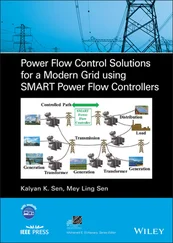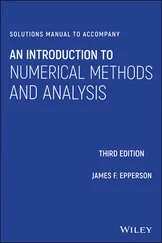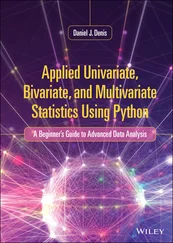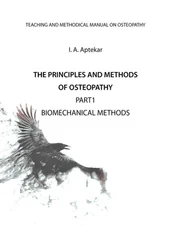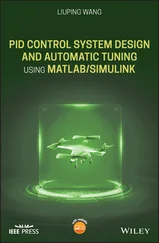429 430
430 431
431 432
432 433
433 434
434 435
435 436
436 437
437 438
438 439
439 440
440 441
441 442
442 443
443 444
444 445
445 446
446 447
447 448
448 450
449 451
450 452
451 453
452 454
453 455
454 456
455 457
456 458
457 459
458 460
459 461
460 462
461 463
462 464
463 465
464 466
465 467
466 468
467 469
468 470
469 471
470 472
471 473
472 474
473 475
474 476
475 477
476 478
477 479
478 480
479 481
480 482
481 483
482 484
483 485
484 486
485 487
486 488
487 489
488 490
489 491
490 492
491 493
492 494
493 495
494 496
495 498
496 499
497 500
498 501
499 502
500 503
501 504
502 505
503 506
504 507
505 509
506 510
507 511
508 512
509 514
510 515
511 516
512 517
513 518
514 519
515 520
516 521
517 522
518 523
519 524
520 525
521 526
522 527
523 528
524 529
525 530
526 531
527 532
528 533
529 534
530 535
531 536
532 538
533 539
534 540
535 541
536 542
537 544
538 545
539 546
540 547
541 548
542 549
543 550
544 551
545 552
546 553
547 554
548 555
549 556
550 557
551 558
552 559
553 560
554 561
555 562
556 563
557 564
558 565
559 566
560 568
561 569
562 570
563 571
564 572
565 573
566 574
567 575
568 576
569 577
570 578
571 579
572 580
573 581
574 582
575 583
576 584
577 585
578 586
579 587
580 588
581 589
582 590
583 591
584 592
585 593
586 595
587 596
588 597
589 598
590 599
591 600
592 601
593 602
594 603
595 604
596 605
597 606
598 607
599 608
600 609
601 610
602 611
603 612
604 613
605 614
606 615
607 616
608 617
609 618
610 619
611 620
612 621
613 622
614 623
615 624
616 625
617 626
618 627
619 628
620 629
621 630
622 631
Applied Numerical Methods Using MATLAB®
Second Edition
Won Y. Yang
Wenwu Cao
Jaekwon Kim
Kyung W. Park
Ho‐Hyun Park
Jingon Joung
Jong‐Suk Ro
Han L. Lee
Cheol‐Ho Hong
Taeho Im

This edition first published 2020
© 2020 John Wiley & Sons, Inc
Edition History
Wiley‐Interscience (1e 2005)
All rights reserved. No part of this publication may be reproduced, stored in a retrieval system, or transmitted, in any form or by any means, electronic, mechanical, photocopying, recording or otherwise, except as permitted by law. Advice on how to obtain permission to reuse material from this title is available at http://www.wiley.com/go/permissions.
The right of Won Y. Yang, Wenwu Cao, Jaekwon Kim, Kyung W. Park, Ho‐Hyun Park, Jingon Joung, Jong‐Suk Ro, Han L. Lee, Cheol‐Ho Hong, Taeho Im to be identified as the authors of this work has been asserted in accordance with law.
Registered Office
John Wiley & Sons, Inc., 111 River Street, Hoboken, NJ 07030, USA
Editorial Office
111 River Street, Hoboken, NJ 07030, USA
For details of our global editorial offices, customer services, and more information about Wiley products visit us at www.wiley.com.
Wiley also publishes its books in a variety of electronic formats and by print‐on‐demand. Some content that appears in standard print versions of this book may not be available in other formats.
Limit of Liability/Disclaimer of Warranty
MATLAB® is a trademark of The MathWorks, Inc. and is used with permission. The MathWorks does not warrant the accuracy of the text or exercises in this book. This work's use or discussion of MATLAB® software or related products does not constitute endorsement or sponsorship by The MathWorks of a particular pedagogical approach or particular use of the MATLAB® software. While the publisher and authors have used their best efforts in preparing this work, they make no representations or warranties with respect to the accuracy or completeness of the contents of this work and specifically disclaim all warranties, including without limitation any implied warranties of merchantability or fitness for a particular purpose. No warranty may be created or extended by sales representatives, written sales materials or promotional statements for this work. The fact that an organization, website, or product is referred to in this work as a citation and/or potential source of further information does not mean that the publisher and authors endorse the information or services the organization, website, or product may provide or recommendations it may make. This work is sold with the understanding that the publisher is not engaged in rendering professional services. The advice and strategies contained herein may not be suitable for your situation. You should consult with a specialist where appropriate. Further, readers should be aware that websites listed in this work may have changed or disappeared between when this work was written and when it is read. Neither the publisher nor authors shall be liable for any loss of profit or any other commercial damages, including but not limited to special, incidental, consequential, or other damages.
Library of Congress Cataloging‐in‐Publication Data
Names: Yang, Won Y., 1953- author. | Cao, Wenwu, author. | Kim,
Jaekwon, 1972- author. | Park, Kyung W., 1976- author. | Park, Ho Hyun,
1964- author. | Joung, Jingon, 1974- author. | Ro, Jong Suk, 1975-
author. | Lee, Han L., 1983- author. | Hong, Cheol Ho, 1977- author. |
Im, Taeho, 1979- author.
Title: Applied numerical methods using MATLAB® / Won Y. Yang, Wenwu Cao,
Jaekwon Kim, Kyung W. Park, Ho Hyun Park, Jingon Joung, Jong Suk Ro, Han
L. Lee, Cheol Ho Hong, Taeho Im.
Description: Second edition. | Hoboken, NJ : Wiley, 2020. | Includes
bibliographical references and index.
Identifiers: LCCN 2019030074 (print) | LCCN 2019030075 (ebook) | ISBN
9781119626800 (hardback) | ISBN 9781119626718 (adobe pdf) | ISBN
9781119626824 (epub)
Subjects: LCSH: MATLAB. | Numerical analysis--Data processing.
Classification: LCC QA297 .A685 2020 (print) | LCC QA297 (ebook) | DDC
518--dc23
LC record available at https://lccn.loc.gov/2019030074
LC ebook record available at https://lccn.loc.gov/2019030075
Cover Design: Wiley
Cover Image: © Yurchanka Siarhei/Shutterstock
To our parents and families who love and support us and to our teachers and students who enriched our knowledge
This book introduces applied numerical methods for engineering and science students in sophomore to senior levels; it targets the students of today who do not like and/or do not have time to derive and prove mathematical results. It can also serve as a reference to MATLAB applications for professional engineers and scientists, since many of the MATLAB codes presented after introducing each algorithm's basic ideas can easily be modified to solve similar problems even by those who do not know what is going on inside the MATLAB routines and the algorithms they use. Just as most drivers have to know only where to go and how to drive a car to get to their destinations, most users have to know only how to formulate their problems that they want to solve using MATLAB and how to use the corresponding routines for solving them. We never deny that detailed knowledge about the algorithm (engine) of the program (car) is helpful for getting safely to the solution (destination); we only imply that one‐time users of any MATLAB program or routine may use this book as well as the readers who want to understand the underlying principle/equations of each algorithm.
Читать дальше




